Flower Meanings
Gladiolus
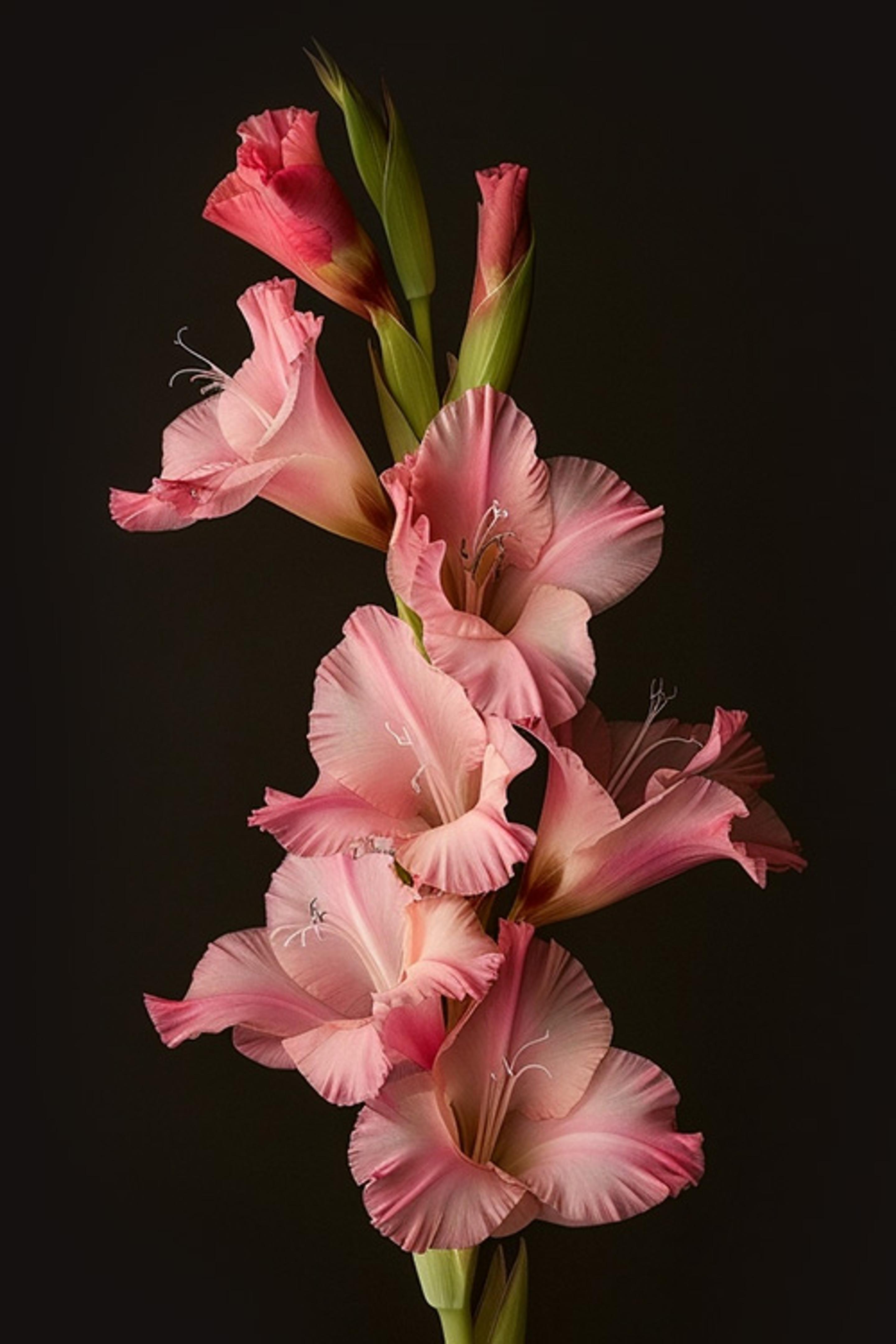

The Meaning of Gladiolus
The gladioli’s tall, bold blooms command attention whether they are outside in your garden, along the sidewalk leading up to your home, or inside in a vase. But the symbolism behind these wondrous flowers truly takes the cake. The gladiolus flower typically symbolizes honor and remembrance, but it has many other meanings too such as:
- Strength of character
- Faithfulness, sincerity, and integrity
- Infatuation
- Never giving up
Glads are also commonly referred to as sword flowers or sword lilies due to the sword-like shape of both the foliage and the spikes of the flowers themselves. Legend has it, the spikiness of the flower was meant to pierce the heart of its recipient with love.
Hmm… a little romantic, a little violent, we love it.
The glad’s ancient name, xiphium from the Greek word xiphos, meaning sword, ties this together quite nicely. Its name was later changed to gladiolus.
So we clearly have a recurring theme of swords. So let’s run with that, shall we?
Gladioli were considered the flower of the gladiators (told you, still on track with our sword narrative). They were used in grand floral displays and were a favorite in gardens, just as they are today!
The gladiolus tends to be considered more of an old fashioned flower. Early American women used them to create a wall of color alongside the back edges of their gardens. They were also commonly planted against fences or up against the walls of the home, as they require a bit of support to uphold these tall, heavy blooms. [1]
August Flower of the Month
Calling all August babies!
The gladiolus is the birth flower of August (along with the poppy!) and makes the perfect August birthday gift.
Gladiolus Color Meanings
While glads don’t technically have their own meaning aligning with the specific colors of the blooms, they are often aligned with the meanings of the traditional colors they come in!
- Yellow glads represent cheerfulness and compassion.
- Red glads represent love and passion.
- Pink glads represent femininity, compassion, and motherly love.
- Purple glads represent charm, grace, and mysteriousness.
- White glads represent innocence and purity.
What Do Gladiolus Smell Like?
Some compare the scent of these beauties to that of a rose.
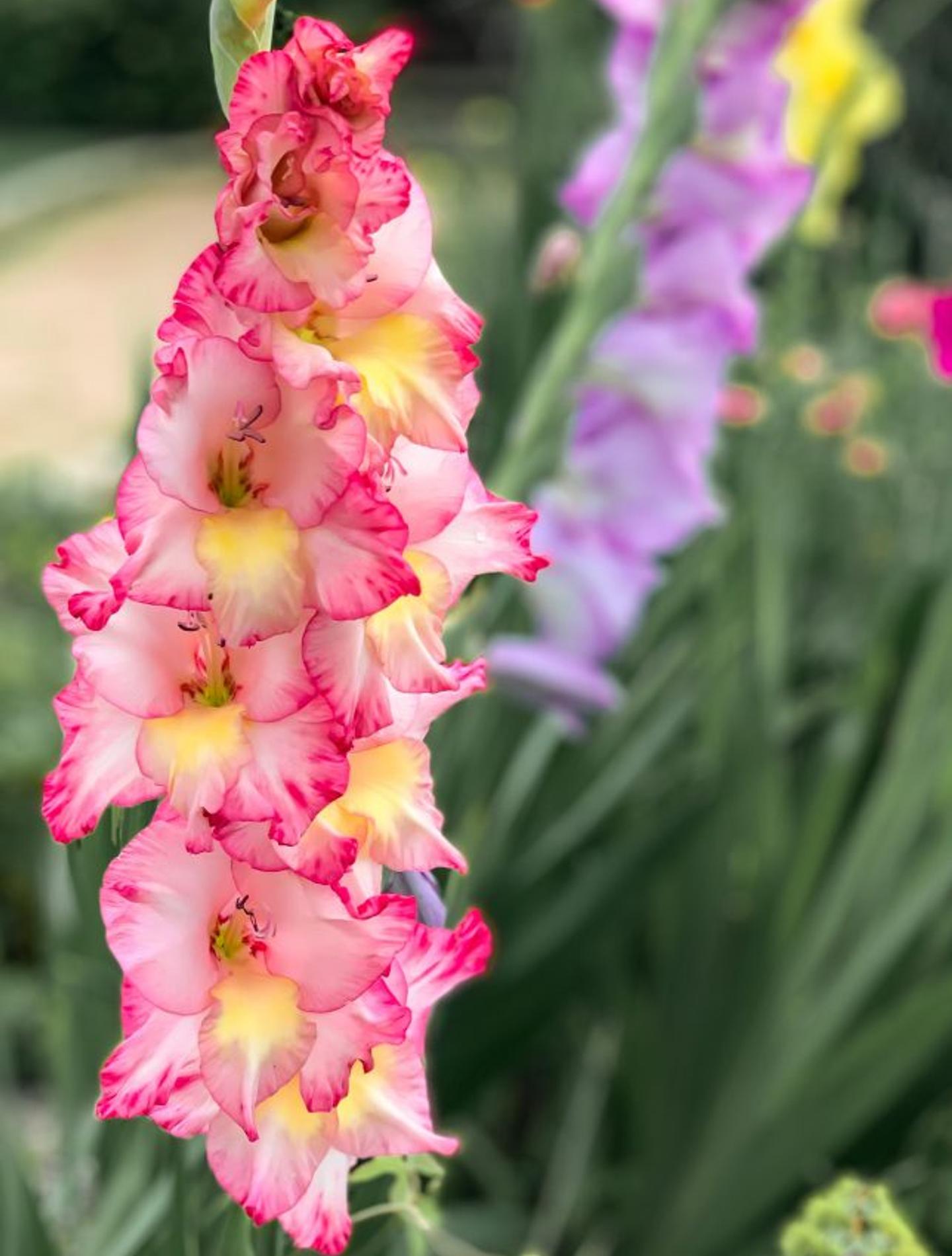
"Look for me at the end of the slender stalk of a lily, that swore of softness, that rises from the religion of its roots"
Nicolette Van der Walt
The History of the Gladiolus
We already know that the gladiolus is considered an old fashioned flower. But why exactly?
Well, let’s take a quick trip to the seventeenth century, shall we?
Wild gladioli were first discovered growing in South Africa. These wild glads obviously were quite striking due to their size and mass. These particular glads were then crossed, and, especially from the Netherlands, more and more were put on the market at quite a fast rate. These varieties varied in size from 50 to 170 centimeters.
The people of South Africa initially used the glads they discovered as food mixed with biological medicines if you can believe it!
Many small types of gladiolus were also formed during this time. Gladiolus nanus being one smaller but nonetheless beautiful example, and Butterfly gladioli, which tends to stand out amongst other glads due to its unique color patterns.
Jumping back into a bit of Roman history, ever heard of the expression “death or gladioli”? Well, it’s not a horribly complicated concept. We all know that the ancient Romans held their famous gladiator fights. It was quite literally a matter of death or gladioli, as the conquerer was praised with bundles of gladioli at the end of the match.
This saying is still used today in the cycle-racing community. It has also come to be used with the “Nijmeegse Vierdaagse,” an international four-day walking event that takes place in and around Nijmegen every year. While this event is held, a street named St. Annastreet in Nijmegen is changed to “Via Gladiola,” Those who successfully cross the finish line will receive gladioli as a reward. So Roman! [2]
DID YOU KNOW - Gladiolus Fun Fact
Although the gladiolus is a perennial flower, which can be dug up and stored through winter in cold climates, the flower does not have a true bulb, as other perennials do. The gladiolus bulb is called a corm. [7]
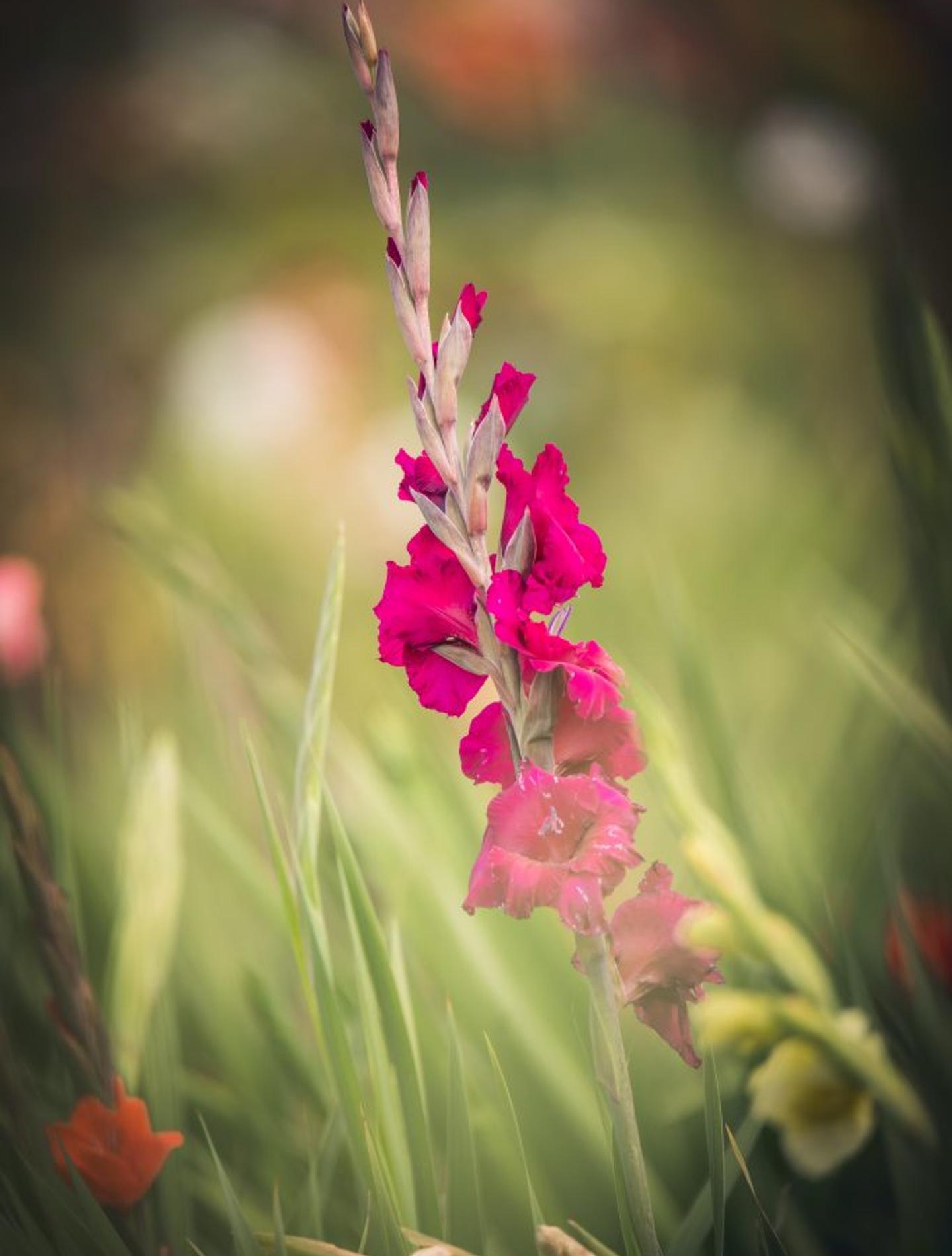
How to Grow Gladiolus
Gladioli are a classic perennial that are known all over the world for their tall, spiky blooms and vibrant colors.
If you’re looking to grow some of your gladiolas in the garden, you’ve come to the right place!
Glads come in a multitude of colors and range in size anywhere from 2 and 5 feet in height.
The blooms themselves also range in size – the smaller or “miniature” varieties less than 3 inches in diameter to the larger “giant” varieties greater than 5 inches in diameter.
If you’re looking to grow the taller varieties, they will need to be stalked, as their height and heavy blooms have trouble holding themselves up on their own. Glads are often planted towards the back of a garden to provide a colorful backdrop for the shorter plants in your garden. But feel free to plant them wherever you’d like!
When to plant gladiolus:
To get the best possible blooms out of your new gladiolus plant, start planting your gladiolus corms in the spring.
Side-note: a gladiolus corm is a piece of specialized stem tissue that is modified to grow underground for food storage that essential fuels growth [3]
Once the dangers of frost have passed, and the soil has warmed to around 55 degrees Fahrenheit, you’re in the clear to start planting your glads!
Starting from your last frost date through to early summer, you can plant another round of corms every 10 days or so, this will result in continuous blooms all the way up to early fall!
Glads for days!!!
It usually will take between 60 and 90 days from the time you plant your glads for the corms to root, grow, and bloom (depending on the variety of course).
Where to plant:
Gladioli should be planted in full sun for best results. They prefer well-draining, moderately fertile soil. They won’t do well in thick, soggy soil.
To prepare your garden, use a garden fork or tiller to loosen up the soil. Dig your fork about 12 to 15 inches deep into the ground. After you’ve loosened up your soil, mix in a 2 to 4 inch layer of compost or manure.
Let’s get to planting!
If you’re planting glads, you’re probably looking to have big beautiful blooms, right?
Of course you are!
To ensure you get those big blooms, your heart desires, plant glad corms that are 1 and a quarter inch or larger in diameter. Set your corm in the hole around 4 inches deep with the pointed end facing up, and cover it up with soil! Space the corms 6 to 8 inches apart.
If you’re planning on using your new glads as fresh cut flowers, plant them in rows to make them easier to tend to and harvest. If you’re planting your glads amongst other flowers, plant the corms in groups of 7 or more for your best blooms!
Water your new plants thoroughly once you’ve initially planted them.
Pro tip: If you’re planting taller varieties of glads, be sure to stalk them immediately (being careful not to damage the corm).
Once you’ve planted your corms, put a 2 to 4 inch layer of mulch around your glads to keep the soil moist, and help to prevent weeds. Water your plants regularly throughout the summer, taking into consideration the amount of rain you get. If you tend to get more than 1 inch of rain a week, water your glads moderately while they’re growing to keep the soil moist.
As your glads grow, remove any dead flowers to ensure continuous blooms!
Once the flowers are completely gone, cut the stalk of your glad off at about 2 to 3 inches above the soil. Leave the plant intact so it can mature and grow corms for the next season. [4]
DID YOU KNOW - Gladiolus Fun Fact
The corms of the gladiolus were powdered and mixed with goat’s milk to soothe symptoms of colic by the British. [7]
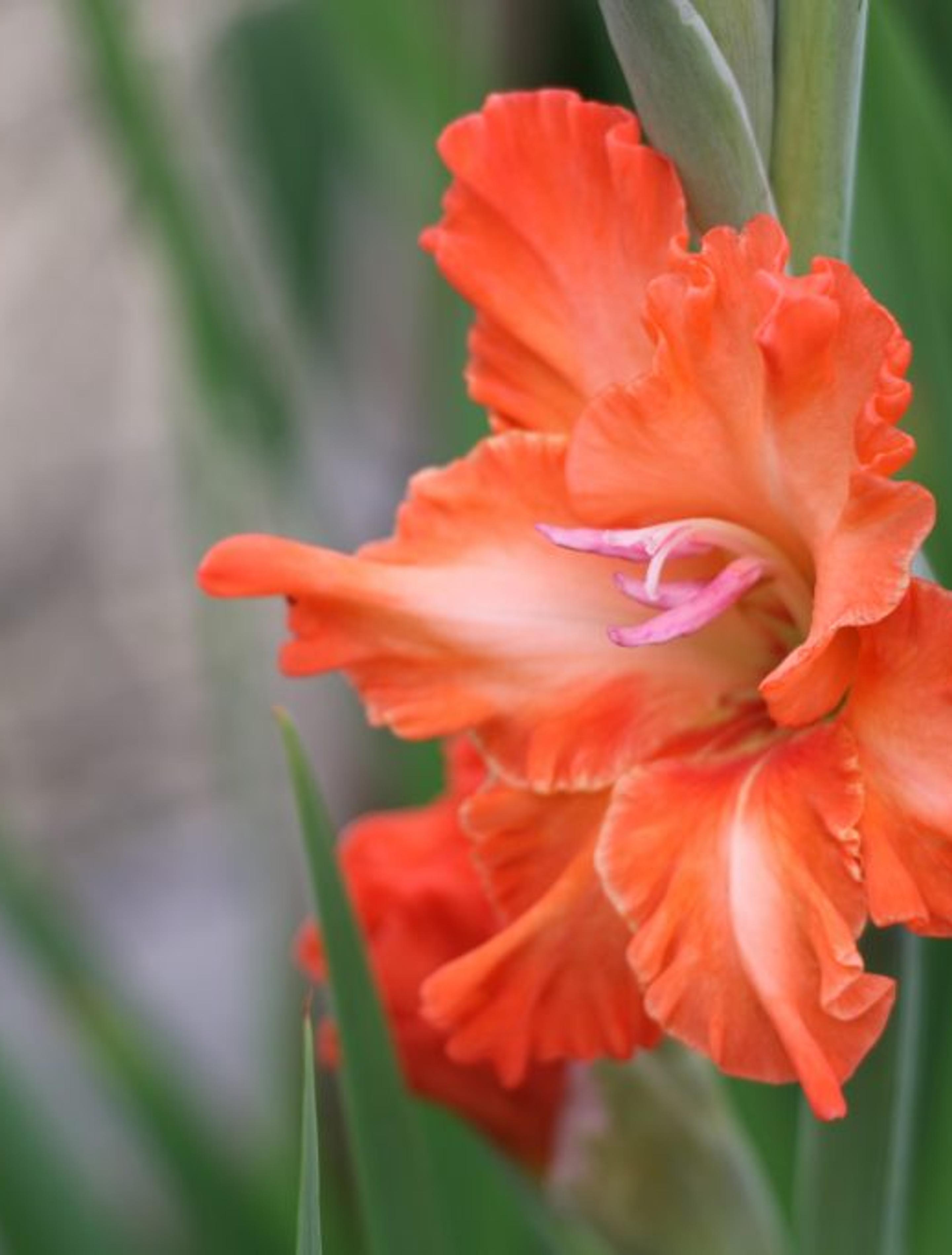
How to Care for Gladiolus
Since gladioli are most commonly grown for the purpose of using them as cut flowers, we’re going to go over how to properly cut these blooms to ensure you get the longest life out of them!
Once several of the buds on your glad’s stalk have begun to open, you can cut the flower stalk diagonally from the plant. It is best to cut them in the morning or the early evening while the temperatures are relatively cool. Try and avoid cutting your glads during the heat of the afternoon. Use a clean, sharp knife or a pruning tool to cut your flower stalk. Be sure to wipe the blades of your tool with alcohol after each cut to avoid spreading any diseases from plant to plant.
If you want to dig the corms later on in the season for storage and next years’ planting or live in a climate where you can leave them in the ground, be sure to leave at least 4 leaves on each plant.
After you’ve removed the flower stalk, place it upright in a tall container of lukewarm water. Bring your container inside and set it in a cool, dark place to allow your freshly cut glad to acclimate. Allow it to adapt to its new climate for several hours before placing it in a vase. Don’t forget your flower preservatives for freshly cut flowers!
To keep your glad fresh, trim about an inch off of the bottom of each stem daily and remove any dying or wilting petals.
If you are planning on leaving a majority or all of your glads in the ground throughout the season, you’ll begin to see the foliage turn yellow about 6 weeks after they bloom and before the first freeze of the fall. Once this occurs, you can begin to dig out the corms and prep them for storage. You can leave the corms in the ground if your climate does not get particularly cold. Simply place a thick layer of mulch over the bed for added protection throughout the winter.
If not, to store your corms, carefully dig them out of the ground and trip the stems and any foliage off using a sterilized knife. Shake off any loose dirt and spread the corms out on newspapers to dry. The drying process usually takes about 3 weeks.
Once they’re dry, discard the corms that are damaged and separate the newly developed cormels from the main corm, making sure you are leaving their outer husks firmly intact. These new mini corms will bloom in about 2 or 3 years if you replant them annually. [5]
When to Send Gladiolus as a Gift
Give gladioli as a birthday gift, particularly for an August birthday as they are August’s birth month flower! Glads are also commonly given to remember a friend, or declare your love! [6]
Gladiolus Bouquets
References:
- 1 - flowermeaning.com
- 2 - Challa
- 3 - Home Guides
- 4 - Almanac
- 5 - Home Guides – After Blooms
- 6 - Eastern Floral
- 7 - Nanz and Kraft
Flower Meanings — keep discovering
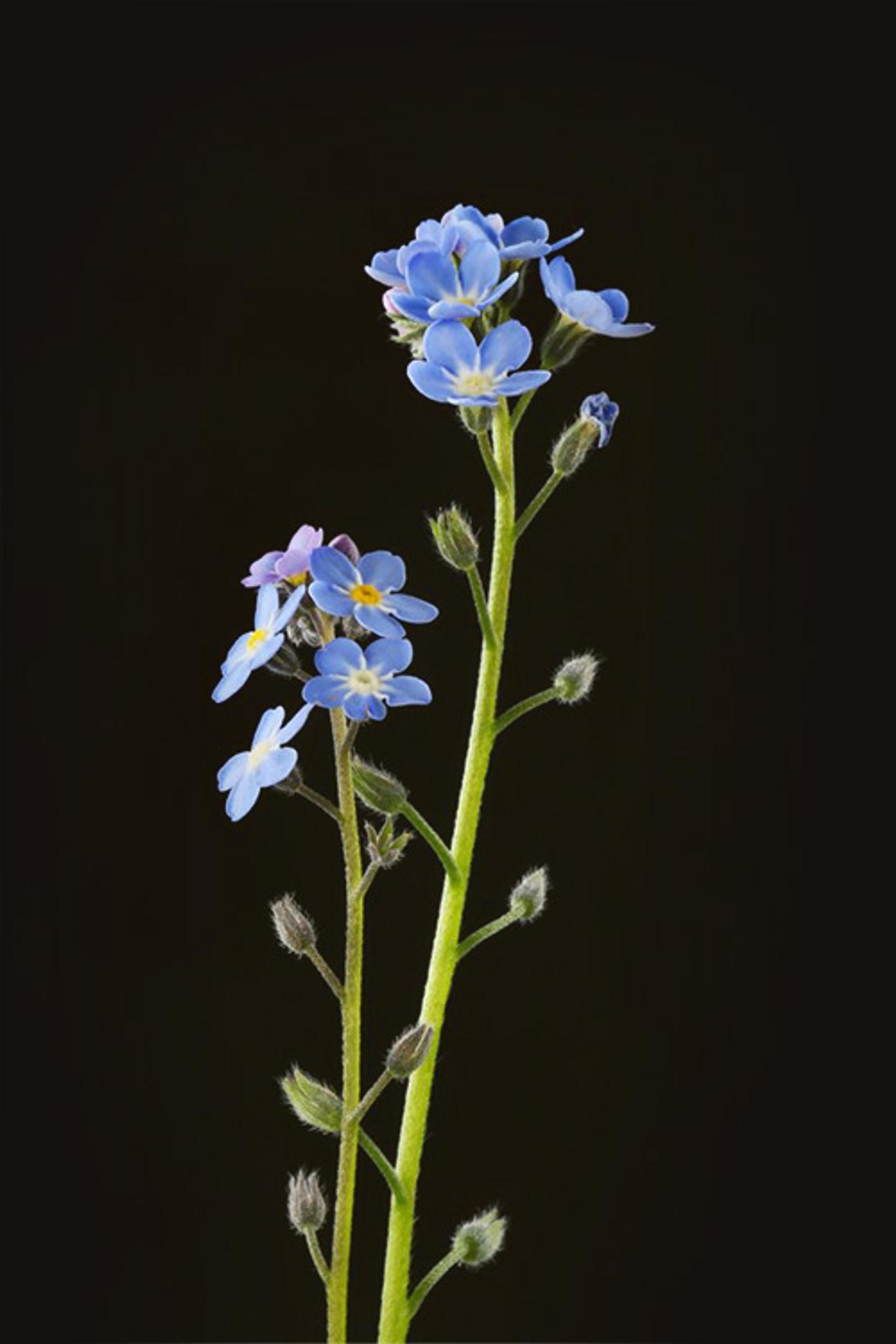
Forget Me Nots
Next time you need a bouquet, don’t forget about forget-me-nots! A delicate but beautiful flower, with a storied past, and rich with symbolism.
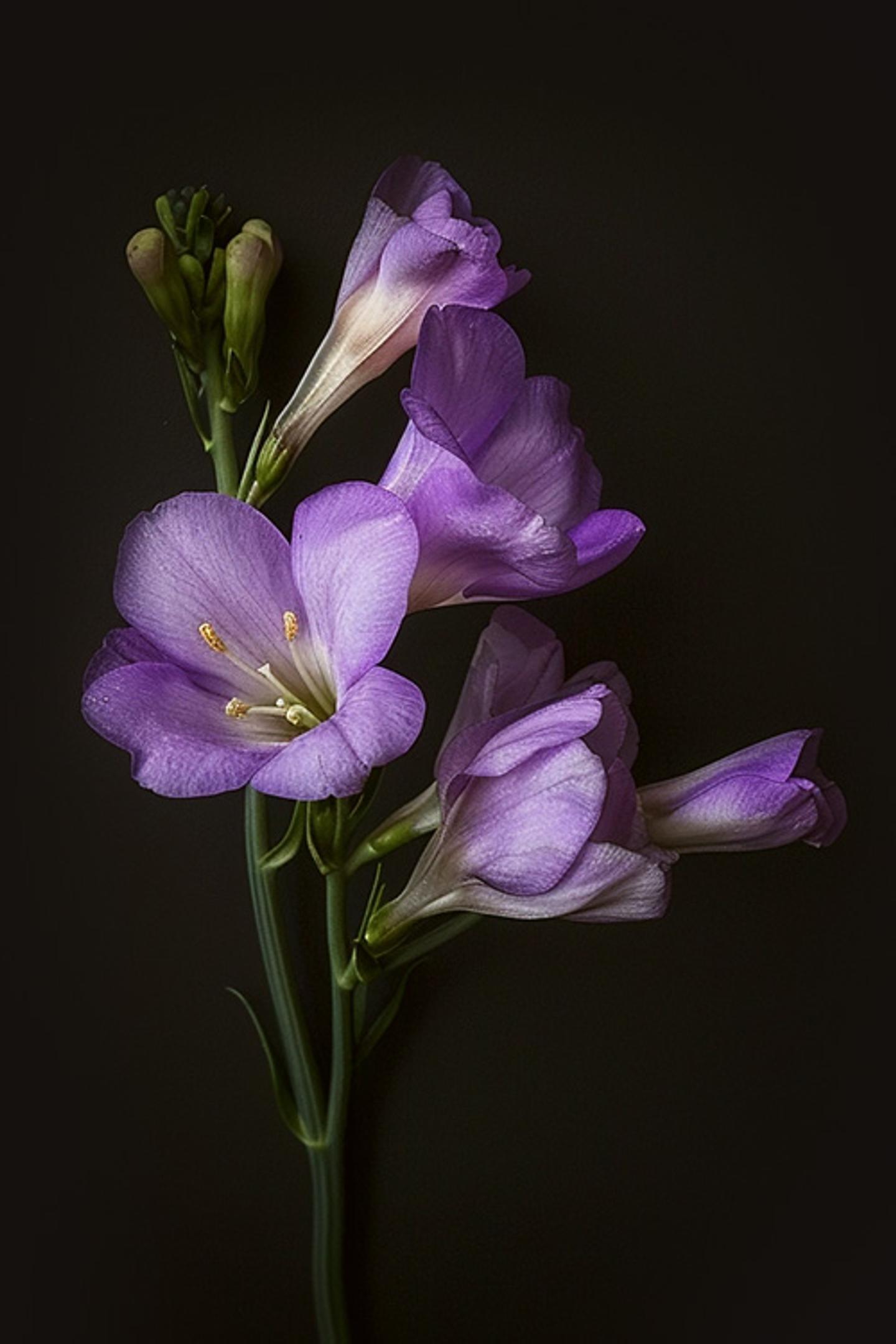
Freesia
The sweet smell of spring! These blooms may be dainty, but don’t let that fool you! We’re talking about freesia!

Gardenia
Gardenias, not to be confused with giardiniera (the pickled vegetable medley), are beloved for their unique fragrance and distinct, creamy-white flowers and leathery green leaves. Gardenias are heat-loving evergreen shrubs or trees that make up for their not-so-easy maintenance with a spellbinding scent.

Gerbera Daisy
They’re sleek; they’re elegant, they’re big, bright, and fabulous. We’re talking about gerbera daisies.

Forget Me Nots
Next time you need a bouquet, don’t forget about forget-me-nots! A delicate but beautiful flower, with a storied past, and rich with symbolism.

Freesia
The sweet smell of spring! These blooms may be dainty, but don’t let that fool you! We’re talking about freesia!

Gardenia
Gardenias, not to be confused with giardiniera (the pickled vegetable medley), are beloved for their unique fragrance and distinct, creamy-white flowers and leathery green leaves. Gardenias are heat-loving evergreen shrubs or trees that make up for their not-so-easy maintenance with a spellbinding scent.

Gerbera Daisy
They’re sleek; they’re elegant, they’re big, bright, and fabulous. We’re talking about gerbera daisies.
Ready to send beautiful flowers?
Our guided experience helps you send a one-of-a-kind arrangement perfect for every occasion.
Send Flowers